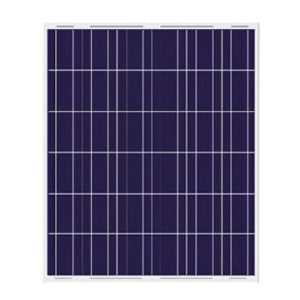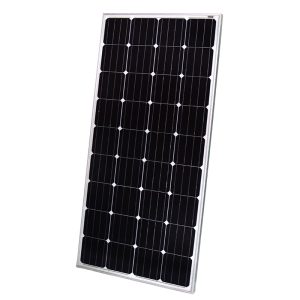Investing in a residential solar system allows homeowners to reduce their reliance on the grid while saving money on electricity costs. A properly sized system, such as a 5.5 kilowatt (kW) solar array, can offset a significant portion of a household’s energy use. But how much does a complete 5.5kW solar system cost to purchase and install?
In this comprehensive guide from Solar Exporters, a leading solar equipment manufacturer, we will break down 5.5kW solar system pricing and outline the key factors that influence overall costs. With over 12 years of experience producing top-quality solar modules and components, Solar Exporters provides homeowners expert insight into designing and budgeting for solar projects.
Average Cost of a 5.5kW Solar System
The average cost to purchase and install a 5.5kW solar system on a home in the United States ranges from $12,000 to $16,000 before taking incentives into account. At the national average rate of $2.18 to $2.91 per watt, a system of this size would cost roughly $12,000 to $16,000 including equipment and professional installation.
However, thanks to the 26% federal solar tax credit available in the U.S., out-of-pocket costs drop significantly to $8,880 to $11,840 on average after claiming the credit. Additionally, many states, municipalities and utilities offer rebates, performance-based incentives and other solar policy programs that can reduce costs even further.
What Makes Up the Cost of a Solar System?
Several key components and services factor into the overall expense when purchasing a complete 5.5kW solar array kit:
- Solar panels – High-efficiency monocrystalline or polycrystalline PV modules make up the largest share of total costs. Panels account for roughly 50% of overall system pricing.
- Inverters – Either string inverters or microinverters are required to convert DC energy into usable AC electricity. Inverters add 10-15% to costs.
- Balance of system (BOS) components – Wiring, racking, combiner boxes, disconnects and other electrical accessories needed for installation and interconnection make up 10-15% of budget.
- Battery storage (optional) – Adding solar batteries for backup capability contributes significantly to overall pricing. Batteries increase costs by 30-40% typically.
- Installation labor – Professional installation services account for 10-25% of a solar system’s cost, but ensure proper permitting, configuration and activation of equipment.
In addition to hardware and construction expenses, other soft costs like system design, permitting fees and financing costs may apply as well. However, solar incentives can help mitigate these costs.
Key Factors That Impact 5.5kW Solar System Pricing
While a 5.5kW solar array costs around $2.18 to $2.91 per watt nationally, several location-based factors cause costs to vary:
- Regional solar incentives – States like California, Massachusetts and New Jersey offer robust solar incentives that reduce installation costs. Tax credits, rebates, SRECs and other state-level policies incentivize solar adoption with higher benefits available in certain areas.
- Local labor and permitting costs – Markets with higher wages for installers and electricians tend to have higher solar pricing. Complex permitting processes also drive up costs in some municipalities.
- Electricity rates – Where energy costs are higher, an investment in solar can yield higher savings and quicker payback. This allows buyers to justify higher solar equipment costs for long-term benefit.
- Sun exposure – Solar potential impacts production. Areas with more annual sunshine hours, such as the Southwest states, will generate more energy and value from the same sized solar system as cloudier regions.
- Roof type and condition – Assessments of roof structure, roofing materials, age and shading are factored into quotes. More complex roofs or those needing repairs add expenses.
Beyond regional influences, the specific solar equipment selected also causes pricing variation from one homeowner to the next:
- Panel efficiency – High-efficiency solar modules produce more power per square foot but come at a higher upfront cost. Equipment upgrades can increase energy output potential.
- Inverter choice – Microinverters cost more than central string inverters initially, but provide panel-level monitoring and maximize total production.
- Battery integration – Adding solar storage batteries increases costs but provides backup capability during grid outages. Different battery chemistry options range widely in pricing.
Estimated Production and Savings from a 5.5kW Solar System
In terms of energy output, a 5.5kW solar array with premium monocrystalline panels can be expected to produce 7,300 to 9,100 kilowatt hours (kWh) of electricity per year on average. This assumes at least 5 peak sun hours per day and an efficient rooftop solar installation with proper siting.
For perspective, the typical U.S. household consumes just over 10,000 kWh annually. So a 5.5kW system could reliably offset 60 to 90% of your home’s total electrical usage, significantly reducing grid dependence and monthly energy bills.
In fact, over the 25+ year lifespan of your solar equipment, your 5.5kW system could save over $30,000 in avoided electricity purchases from the utility. This clean energy investment pays dividends for decades to come.
Federal Tax Credits and Additional Incentives
For U.S. homeowners, the 26% federal solar tax credit (ITC) provides a major incentive for going solar before it steps down to 22% in 2023. This credit reduces your federal income taxes by 26% of the gross cost of purchasing and installing solar equipment.
On a pre-incentive price of $16,000 for a 5.5kW solar system, claiming the ITC would save you $4,160 on your taxes. Combined with additional local solar incentives, total savings of $5,000 to $8,000 are possible.
These savings help solar equipment pay for itself more rapidly. When factoring in the ITC and forecast electricity cost savings, a 5.5kW solar system can achieve payback in 6-12 years for a sound return on your investment.
Ongoing Costs and Maintenance Requirements
While solar modules and equipment may carry 10-25 year manufacturer warranties, a properly functioning system does require periodic maintenance and the occasional replacement of system components to keep performing optimally over its 30+ year lifespan.
Typical ongoing costs for a 5.5kW solar system include:
- Inverter replacement – Central inverters often need replacement after 10-15 years ($500 to $2,500). Microinverters may last the life of the system.
- Roof and panel cleaning – Annual panel cleaning maximizes solar production ($150 to $350 per cleaning).
- Monitoring and meter fees – Many solar loans or leases include recurring fees for production monitoring.
- System repairs – On average, minor repairs add up to $80 to $150 per year. But serious damage from weather events could require major system repairs.
When comparing solar quotes, understanding what maintenance services are included can help you forecast long term costs more accurately.
Shop Solar Exporters for Your Complete Solar Equipment Package
As a leading manufacturer of solar modules and components for over 12+ years, Solar Exporters offers homeowners premium equipment, custom packages and technical guidance to facilitate your solar project.
Browse our online catalog for Tier 1 solar panels, mounting systems, inverters, and accessories to build a high efficiency 5.5kW solar system. Or contact us for full system quotes and special pricing.
And with extensive quality control and in-house engineering expertise, Solar Exporters ensures reliable performance and maximum ROI from your solar investment.
Email us or call +86 15678870014 to speak with our solar professionals about purchasing long lasting solar modules for your home energy system.



